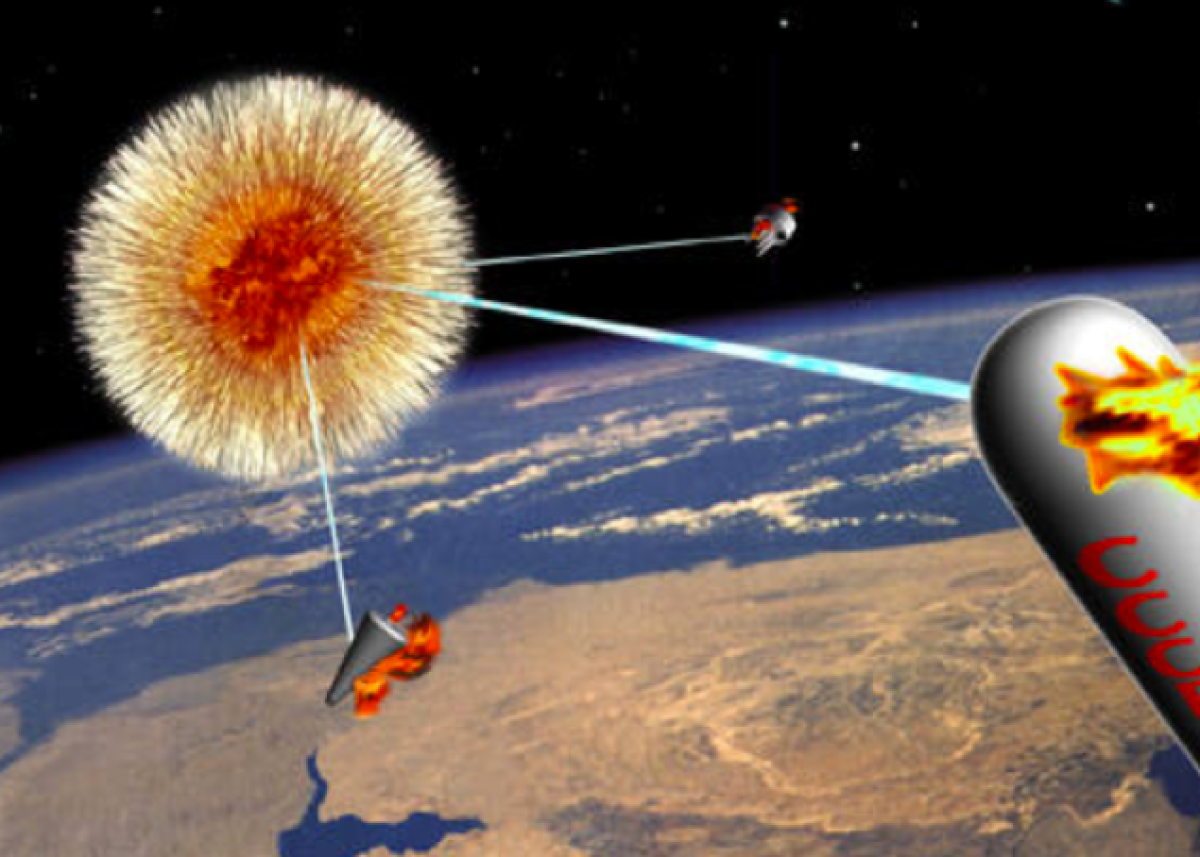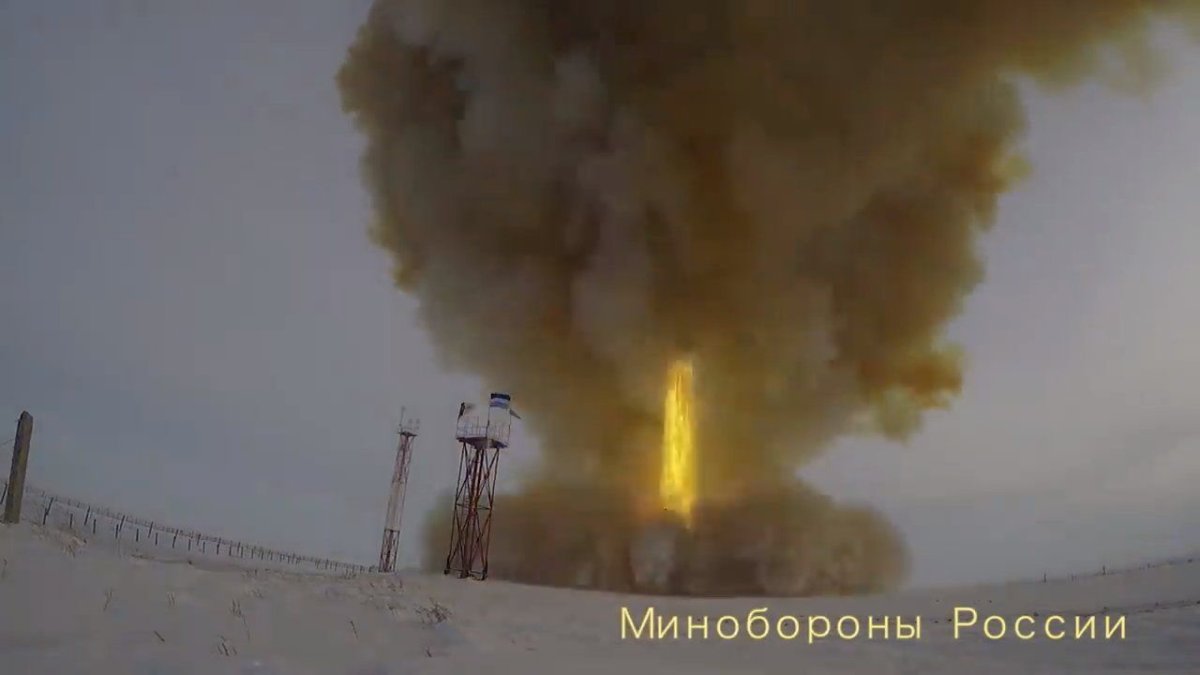President Donald Trump’s new global missile defense plan would be too expensive and technologically taxing to effectively implement, leading experts have said.
The president unveiled his 2019 Missile Defense Review, the first of its kind since 2010, during an address Thursday at the Pentagon. He pledged to virtually eliminate any external threat to the United States, vowing to “to ensure that we can detect and destroy any missile launched against the United States anywhere, anytime.”
Commenting on this statement specifically, Ploughshares Fund think tank director Joseph Cirincione said during a press call that this “is simple to say, impossible to do.”
“If you liked the president’s border wall, wait until you see his space wall,” Cirincione, who also served as a professional staff member of House Armed Services Committee and Government Operations Committee responsible for congressional oversight of missile defense programs in the 1980s and early 1990s, added. “This is a complete fantasy.”

Trump’s review has set out to improve existing ballistic missile defenses, while expanding on ways to intercept cruise missiles and hypersonic missiles. The president has specifically targeted top military rivals Russia and China, who have invested in offensive capabilities to narrow the gap between their power and that of the United States. North Korea was also believed to possess a number of nuclear-capable intercontinental ballistic missiles, while Iran has invested in missile might as well, but was not believed able to strike the U.S.
The latest missile debate came amid the longest government shutdown in U.S. history, prompted by Trump’s demand for $5.7 billion to fund the construction of a wall on the nation’s southern border. Proponents have argued the project is necessary to stem the flow of undocumented immigration, while critics have dismissed the idea as costly and ineffective.
Beyond the southern border, Trump on Thursday suggested a comprehensive defense overhaul that would essentially protect the U.S. from threats anywhere in the world. Assessing what he estimated to be a $1 trillion cost for the ambitious missile shield project—which includes additional ground-based interceptors and newly-installed sensors in space—versus the threat posed by adversaries, Cirincione said that “these weapons are unnecessary, unaffordable and unworkable.”
John Tierney, former chairman of the National Security and Foreign Affairs Subcommittee of the Government Oversight and Reform Committee, who now serves as executive director for the Center for Arms Control and Non-Proliferation, agreed. He said Trump’s zeal to strengthen the U.S. military was based more in a “religious drive” than actual strategic value.
“There’s gotta be a point where there’s more theology than technology,” Tierney said during Thursday’s call, describing the missile program’s prospects as something that is “not going to happen technologically and could not happen financially.”

Trump’s push for greater missile defense was partially rooted in Vladimir Putin’s State of the Nation address last March, when the Russian president showcased a number of advanced weapons he claimed were capable of thwarting even the most tehcnologically advanced defense systems. He claimed Russia’s arsenal included nuclear-capable and hypersonic missiles that the U.S. currently has no defense fast enough to intercept.
Putin justified his weapons development by arguing Washington and its allies had ignored Russian interests since the Soviet Union’s collapse and, during an interview with NBC News, said that former President George W. Bush’s exit from the 2001 Anti-Ballistic Missile (ABM) treaty was “precisely” when “an arms race started.”
U.S.-Russia relations have deteriorated considerably throughout the 21st century, with many observers on both sides making comparisons to the Cold War. Through his 2019 Missile Defense Review, Trump has inspired further analogies, especially to the doomed “Star Wars” Strategic Defense Initiative launched by former President Ronald Reagan in the 1980s, which eventually died out due to technological and financial limitations as well as arms control treaties.
With Trump considering following the Bush administration in abandoning such deals, which include the Intermediate-range Nuclear Forces (INF) treaty and the Strategic Arms Reduction Treaty (START), the U.S. and Russia may once again find themselves on a collision course. Cirincione described the missile review as “throwing fuel on the fire of nuclear arms race” and Andrei Krasov, first deputy head of the defense committee in Russia’s lower house of parliament, also criticized the report.
“They just have a desire to draw us into an arms race,” Krasov told the Interfax news outlet. “We will not be drawn into any arms race. We have the most modern weapons and military equipment. We should respond to new military initiatives by the U.S. and its NATO allies with intensive exercises. We have everything else, we should not be drawn into the arms race. The military budgets of Russia and the United States are still incomparable.”

Experts also took into account the economic toll of rolling out the president’s third annual defense boost. With domestic debates focusing primarily on the border wall at present, Tierney called on Congress to scrutinize the missile review “not only because it’s not a reliable system from a national security system, but because of its costs.”
Laura Grego, a senior scientist at the Union of Concerned Scientists’ Global Security Program, had similar doubts about the prospects of the Pentagon bringing Trump’s plan to life. She said there was “a real disconnect” between the kind of grand plans the White House had for U.S. military infrastructure and the financial and political reality of the U.S.
“This is just technically unachievable and economically ruinous if tried,” she added.
